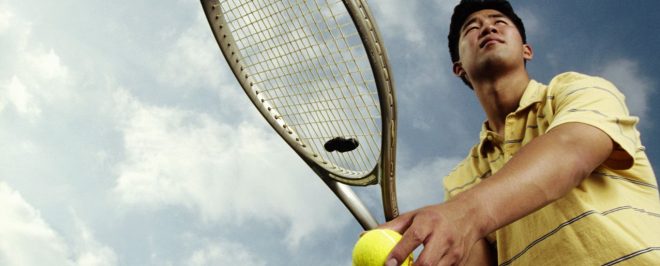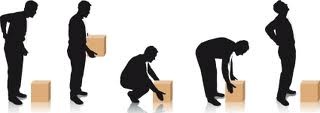
Clinic News
A staycation, or holistay, is a period in which an individual or family stays home and participates in leisure activities within day-trip distance of their home and does not require overnight accommodation.
Sometimes we forget how many wonderful things are on our doorstep and only a short ride away. With limited access to the wonders of the world why not explore what's in our region. The advantages are - you get to sleep in your own comfy bed at night - which your back and neck will love, you don't have to suffer arduous car or plane journeys, also a happier back and you are supporting our local economy.
Check out our articles below on top tips for summertime sports, heavy lifting, holiday pain avoidance and restful bedtime.
Read Therapist Thoughts for an important update about a small price increase from August.
As Troy travels north to spend time with family for a well-earned break next week, Alex will be holding the fort - appointment slots are limited even though she is working a full 5 1/2 days so please be mindful to ensure you cancel in good time if you can't make your appointment so that they can be used by someone patiently waiting on the reserve list.

Summer Time Sports
Summertime has arrived - well it did make a short appearance, and sport is in full flow with Wimbledon and the Euros, so it gives us added incentive to get out there and take part but with it comes the added need for us to take extra care of our necks, backs and spines to avoid pain and injury…
If the arrival of sunshine has caused you to pack away your winter jumpers and, instead, pull out your racket, shin pads or helmet for a bout of summer activities, remember to take note of these simple steps to ensure you steer clear of any unwanted pain and discomfort.
RUNNERS can avoid injury by regular stretching of the tendons and wearing good shoes with shock-absorbing features.
RACKET-SPORTS PLAYERS should be wary of playing through the pain of Tennis Elbow. Tennis Elbow is in fact an overuse injury, caused by repetitive movements at the wrist forcing the thumb outwards and the palm upwards. Continuing to play will only exacerbate the problem.
GOLFERS are particularly prone to lower back injuries. Graphite clubs and soft spiked shoes will help absorb the shock which can bring on a back injury. Your chiropractor can suggest appropriate warm-ups and exercises, and help you work on an alternative swing.
GARDENERS commonly suffer from aches and pains, but they can avoid lower back trouble by kneeling on one leg rather than bending from the hips, keeping the back hollow whilst digging, and varying tasks throughout the day to avoid repetition injury.
DIY, like gardening, is often far-removed from everyday activities. When the sun is shining many will want to get out in the garden and get on with the long list of DIY jobs that have piled up over the winter months. Enthusiasts often injure their back by in habitual exertion, so when lifting, take the weight on bent legs, keeping the back straight.

Mattress Matters
Could your mattress be the cause of your back pain? It’s time for a change!
While buying a new mattress can be a costly investment, it is important to take note of the signs that it needs replacing to reduce back and neck pain which can be triggered by a bad mattress. This is usually down to people only changing their mattress once every ten years, despite recommendations to do so every seven years, as advised by venerable sources such as the Sleep Council.
How often you change a mattress depends on lots of factors, including your weight and how well you care for your mattress. As soon as your mattress stops supporting your back, know that it’s time to get a new one.
5 signs that it’s time to change your mattress:
- You wake up feeling stiff or aching.
- You had a better night’s sleep somewhere else.
- Your mattress is misshapen or sagging.
- Your mattress creaks when you move.
- You can feel individual springs.
4 factors to remember when choosing a new mattress:
- Choose a mattress that supports your weight; a heavier person will need a more supportive mattress than someone who is lighter in weight.
- Test your mattress before buying; your spine should be parallel to the mattress when lying on your side. Make sure your spine doesn’t sag, as this is a sign your mattress is too soft, or bow, as this is a sign that it’s too hard.
- When selecting a suitable pillow, make sure it allows your neck to become a continuation of the straight spine created by your well-suited mattress, making sure that your neck neither too high or too low.
- If you share a bed with your partner, make sure they are with you at the time of purchasing your mattress. Your ideal mattress tensions could be different. If this is the case, try buying from a range that allow two single mattresses to be zipped together so that you both get the support you need.
Don’t forget to check out our short video on the website for more information (http://www.beestonchiropractic.co.uk/public-videos/). Your chiropractor can offer further help and advice. We also stock two types of memory foam pillows so ask at reception for more details.

Don\'t Let Back Pain Spoil Your Holiday!
Think of holidays and most people will dream up images of days spent having a good time, perhaps relaxing in the sun or pursuing new interests. But how many people would wish to imagine themselves lying down indoors with back pain?
Unanticipated injury, such as back pain, can spoil a good holiday – don’t let it spoil yours. Aim to reach a good level of fitness before you go away, and when taking part in sports, make sure you know how play them properly.
Whatever physical activities you choose to engage in, bear in mind that a good number of back complaints are offset by failing to warm up properly before exercising.
Different sports have different guidelines as to how you should take care of your back. For example, when swimming it’s important not to try to keep the whole of the head out of the water, as this places considerable strain on the neck and shoulders, which can lead to problems in the lower back
Golf can present its own problems, particularly if the muscles aren’t warmed up before hand in order to cope with the rotation (twisting) of the lower back when swinging the club. Prevent this by practicing stretching and flexibility exercises before playing.

Advice for Lifting Heavy Loads
Whether it’s emptying the car boot or moving files at work, we all end up lifting heavy loads once in a while. However, many of us find it hard to lift objects correctly in way that we don’t injure our backs. So, what should we be doing to protect our spines? Here are the answers to a few frequently asked questions that could be useful in helping prevent back injuries:
Have you checked the object before you try to lift it?
- Test every load before you lift by pushing the object lightly with your hands or feet to see how easily it moves. This tells you about how heavy it is.
- Remember, a small size does not always mean a light load.
Is the load you want to lift packed correctly?
- Make sure the weight is balanced and packed so it won’t move around as loose pieces inside a box can cause accidents if the box becomes unbalanced.
Is it easy to grip this load?
- Be sure you have a tight grip on the object before you lift it.
- Handles applied to the object may help you lift it safely.
Is it easy to reach this load?
- You can be injured if you arch your back when lifting a load over your head.
- To avoid hurting your back, use a ladder when you’re lifting something higher than your head.
What’s the best way to pick up an object?
- Use slow and smooth movements. Hurried, jerky movements can strain the muscles in your back.
- Keep your body facing the object while you lift it. Twisting while lifting can hurt your back.
- Keep the load close to your body. Having to reach out to lift and carry an object may hurt your back.
- “Lifting with your legs” should be done only when you can straddle the load. To lift with your legs, bend your knees, not your back, to pick up the load. Keep your back straight.
- Try to carry the load in the space between your shoulder and your waist. This puts less strain on your back muscles.
How can I avoid back injuries?
- Pace yourself. Take many small breaks between lifts if you are lifting a number of things.
- Don’t overdo it – don’t try to lift something too heavy for you. If you have to strain to carry the load, it’s too heavy.
- Make sure you have enough room to lift safely. Clear a space around the object before lifting it.
- Look around before you lift, and look around as you carry. Make sure you can see where you are walking. Know where you are going to put down the load.
- Avoid walking on slippery, uneven surfaces while carrying something.
- Don’t rely on a back belt to protect you. It hasn’t been proven that back belts can protect you from back injury.
- Get help before you try to lift a heavy load and use a trolly or some other leverage, if you can.
We treat all conditions that affect any muscle or joint in your body, from your head to your little toe! One of the most common complaints that we treat is back pain and Chiropractic is recommended by the government authority, the National Institute for Clinical Excellence (NICE) for acute and chronic back pain. Some of the other conditions that we treat are neck and headache, shoulder pain, leg and hip pain, knee and foot pain, sciatica and arthritis. Our registered Chiropractors all have at least five years of training. Treatment costs can be covered through most health insurers. If you are in any doubt, we are always very happy to talk with you on the phone to see if your condition will respond well to Chiropractic treatment. Call the clinic now to arrange an appointment time that works for you. 0115 9225085 If you would like to opt-out of receiving these newsletters please follow the unsubscribe link below, email alex@beestonchiropractic.co.uk or let us know at your next appointment.





